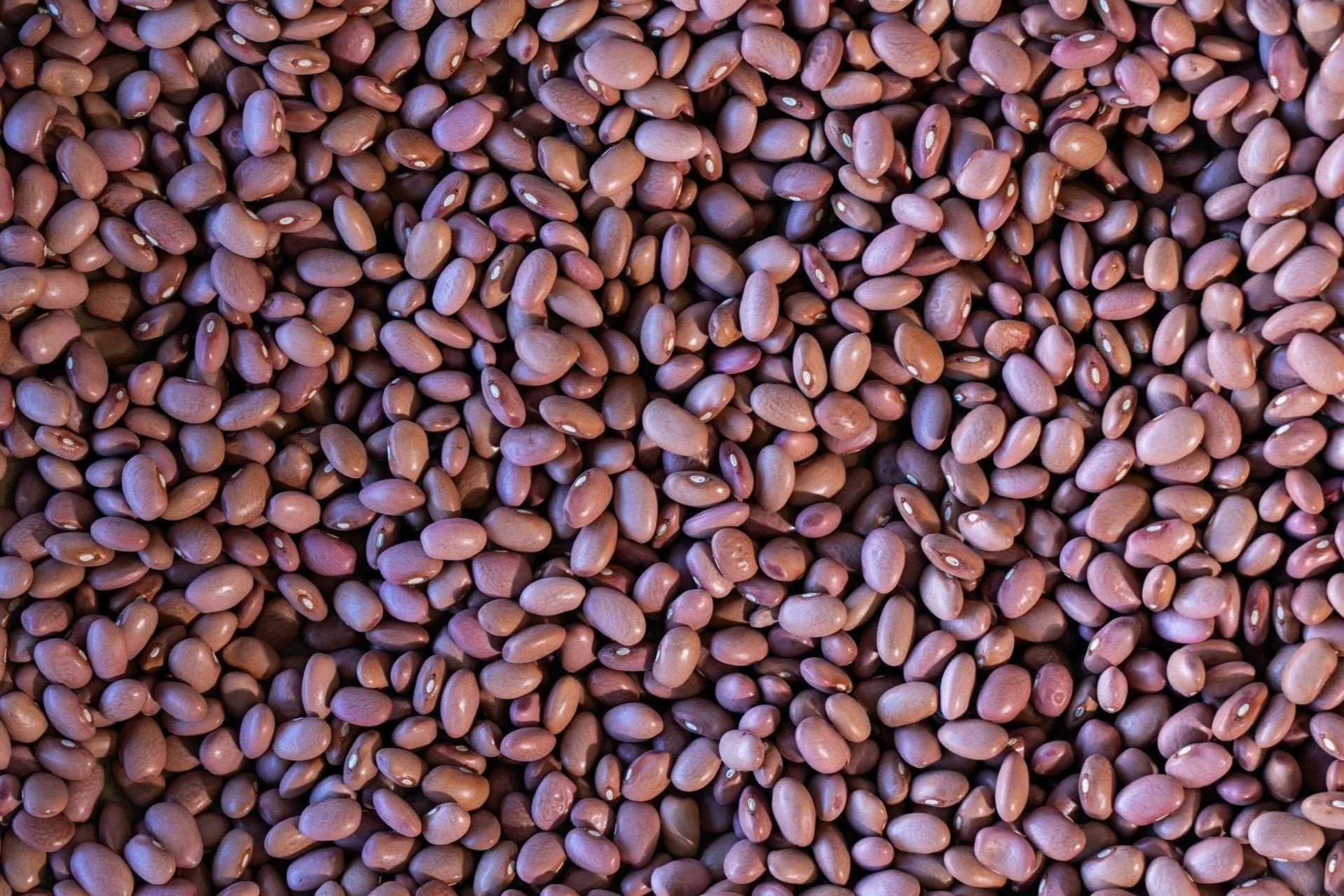The UK’s largest range of rare & beautiful heirloom bean varieties, sourced fresh at small farms in Mexico & the US by bean legends Rancho Gordo. Delicious, nutritious, sustainable! You won’t find these beans anywhere else in the UK.

“Imported from the legendary Rancho Gordo, these are possibly the most beautiful dried beans I’ve ever seen. And I can’t tell you how delicious they are, because you’d hardly believe it with something so simple”
“The Heirloom Bean Co is my new favourite food brand”
…where the leguminati get their fix!
From Mexico to the Mediterranean, people who love legumes know that dried beans - if you can get them fresh - are always the very best.
We fell for these jewel-like beauties at first sight, and at first bite! It is our mission to introduce the UK to heirloom beans, and their extraordinary environmental - and culinary - potential.
Our beautiful heirloom beans are simple to prepare
- they’re picked & packed fresh, so no soaking is required!

We offer 23 heirloom varieties - a beautiful bean for every occasion!
Why heirloom beans will save the earth*
* (basically!)
“We're living in a world where we're going into a lab to create the future of food. But we have the perfect food right here, it's beans. They are incredible for the environment, they're incredible for health, they're the most affordable form of natural protein when you're cooking them from scratch. You know, why are we searching in a food lab when we've got something which can also be delicious?”
The Food Programme, BBC R4
-
Taste - you'll never go back to supermarket 'commodity' beans
‘Soaking and cooking your own beans is always best, not only because they taste infinitely better, but because of the bean broth, cloudy with starch and soft sweetness that has seeped from the beans as they cook. As a flavour enhancer and thickener, bean broth is a great addition to many dishes.’ Rachel Roddy, the Guardian
‘We could spend a day talking about all the reasons to love dried beans: they're more cost-effective than canned; they're tastier; there are tons of cool varieties to choose from. We like to spring for dried heirloom beans not only because of their amazing flavour, but also because they're often sold by outlets that are getting fresh supplies directly from the growers.’ Bon Appétit magazine, leading US gourmet publication
‘Most beans we get in the UK from a supermarket are highly commoditised, sold in the same way we buy salt and petrol. They're also grown for the canning process so you need beans that don't turn into mush, meaning varieties that were maybe more soft and tender are neglected.’ The Food Programme, BBC R4

-
Agronomists, ecologists & nutritionists agree that legumes must play a huge role in our planet's food future: in terms of efficiency & sustainability, no other protein source comes close
Every sensible person accepts that we need to eat less meat, and find alternative protein sources that take fewer good things out of our precariously poised environment, and put fewer bad things into it. Legumes need much less water than livestock, and much less land. Greenhouse gas emissions are minimised, and there are hugely lower economic and environmental costs at every stage of a bean’s journey from farmer’s field to dining table. Dry pulses cooked at home (like ours) have a much smaller environmental footprint than anything jarred or canned.
In terms of nutritional bang-per-buck, beans, peas and lentils beat grain crops hands down - and unlike most grains, they can be eaten without any processing. Heirloom beans are the pinnacle of agronomic efficiency: they are generally grown without fertiliser, very cleverly producing their own via a process called biological nitrogen fixation, enriching not just themselves but the soil around.
-
Beans are very, very good for you
Studies show that eating beans lowers the risk of heart disease, decreasing both total cholesterol and LDL (‘bad’) cholesterol. Due to their high fibre and protein content, beans raise satiety – the feeling of being full. Many regular consumers report losing excess weight. Beans also contain higher levels of disease-fighting antioxidants than almost any other foodstuff.
Dried beans are more nutritionally dense than canned or jarred beans, with higher levels of protein, fibre, iron, potassium and magnesium. They also contain far less sodium than canned or jarred beans, which are always factory processed with salt and chemical preservatives. It’s no accident that the most recent Bloomberg index on global health declared Spain – where more beans are consumed per head than anywhere else in Europe – the healthiest country in the world. Beans are a cornerstone of the fabled Mediterranean diet.
‘In a nutshell (or bean pod) - for our nutritional security, environmental wellbeing and general sense of life-enhancing healthful deliciousness - all roads lead to heirloom beans!’ Dr Chelsea Didinger, alegumeaday.com (a superb resource for all things bean – and we’re not just saying that because Dr Didinger let us use some of her lovely photos)

When cooked, each of our bags produces the same as 4 cans of beans, or 3 large jars
Nearly all beans derive from those domesticated in the Americas 8,000 years ago. Our heirloom beans are sourced from their original homelands
Phaseolus vulgaris, the globally dominant bean genus, emerged in Mexico before splitting into two gene pools: Mesoamerican (1) and Andean (2)
Illustration by Spedona, adapted from Histoires de légumes, des origines au XXIe siècle, INRA Éditions




























